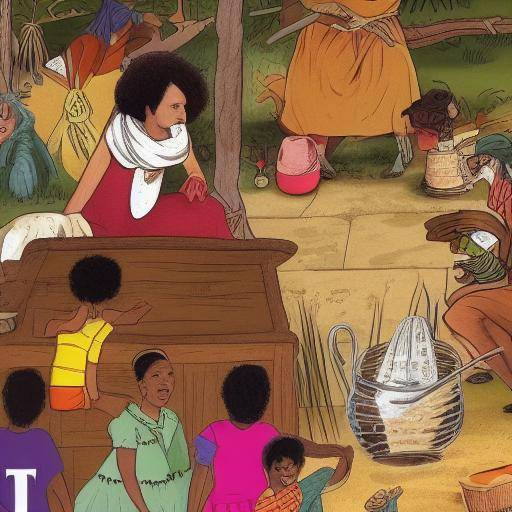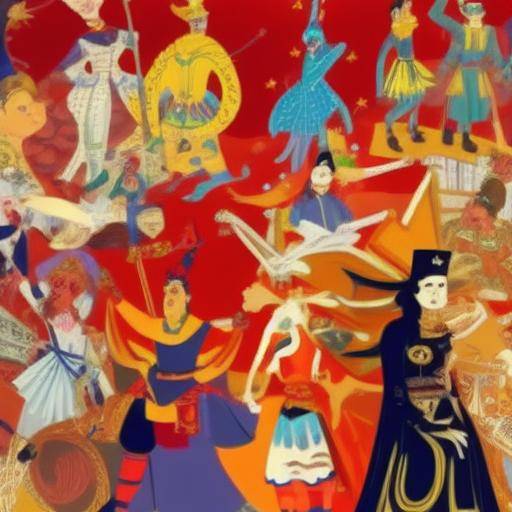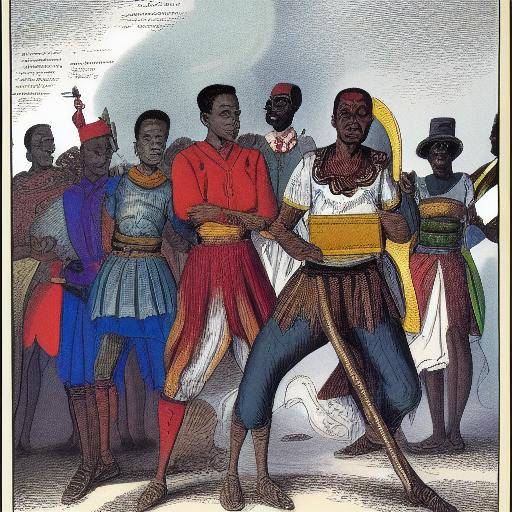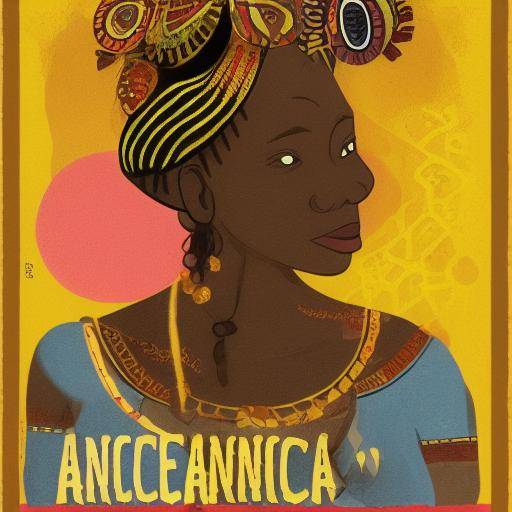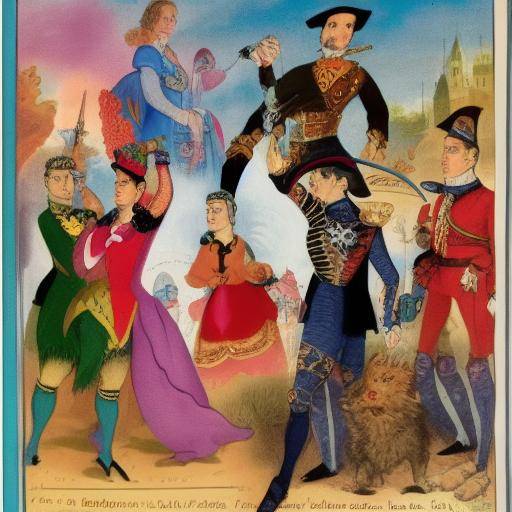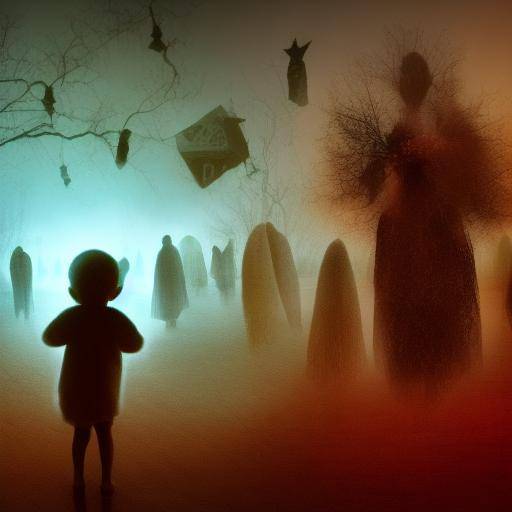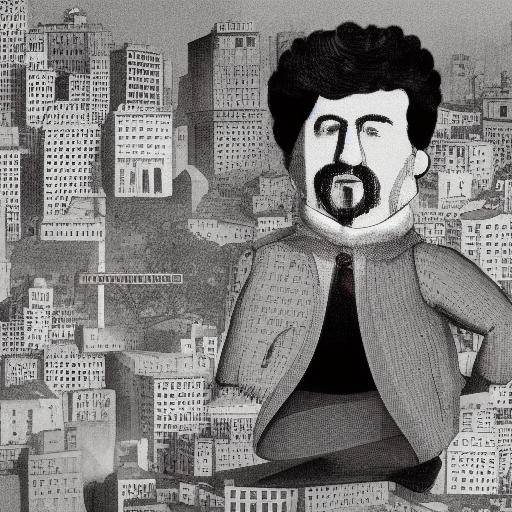
The "man of the sack" is a character who has captured the imagination and fear of many people throughout generations. This mythical character, present in the traditions of various cultures, has been part of stories that have been transmitted from mouth to mouth, feeding the urban myths that keep us awake at night. In this article, we will thoroughly explore the concept of the "man of the sack," the surrounding urban legends and the fascinating stories it has generated over time.
Introduction
The "man of the sack" is a recurring character in folklore and popular stories of many cultures around the world. Also known as "the coconut" or "the man of the rib", his presence is commonly related to the threat to children and vulnerable people. The figure of the man of the sack has evolved over time, adopting different forms and meanings in different cultures. This evolution has led to the creation of numerous urban legends and accounts that persist in collective consciousness, generating fear and caution in those who listen to them.
In this article, we will explore the historical roots of the man of the sack, examine the urban legends that surround him and immerse ourselves in the intriguing stories he has inspired. We will also offer a detailed view of the contemporary perceptions of the man of the sack, providing a critical look at this myth rooted in popular culture.
History and Background
The origin of the man of the sack goes back to various cultures and historical periods. Over the centuries, it has manifested itself in different forms and contexts, becoming a constant element in the oral narrative of various societies. From ancient European legends to Latin American horror stories, the man of the sack has acquired a wide range of meanings and connotations.
The legends surrounding the man of the sack have evolved in parallel to sociopolitical and cultural changes throughout history. These legends have often been used as instruments of moral education, urging children to stay away from danger and to adhere to the social norms of their environment. In turn, the man of the sack has been a source of inspiration for artists and writers who have exploited his figure in the creation of literary, pictorial and cinematic works.
It is essential to understand that the variants of the man of the sack in different cultures reveal the fundamental concerns and values of each society. Thus, these stories allow a profound view of the different worldviews and realities of multiple communities around the world.
Analysis in Deep
Although the man of the sack has generally been portrayed as a terrifying figure, his presence in contemporary culture has evolved to reflect more complex fears and anxieties. In the digital era, the representations of the man of the sack have found a new home in literature, cinema and the media, adapting to modern concerns and providing a platform for the exploration of current social and psychological issues.
The fear of the man of the sack remains a significant part of the childhood experience, and the narratives about this character continue to be a source of exploration of fears and imagination in childhood. At the same time, the man of the sack has acquired a new relevance in academic study and cultural dissemination, serving as a lens through which the complex mechanisms of fear and how they manifest themselves in contemporary society are examined.
Comprehensive review
The impact of the man of the sack is not limited to the cultural sphere, but extends through a variety of aspects that transcend the purely artistic and narrative. This iconic character has influenced various disciplines, including psychology, literature, cinema, sociology and anthropology. These multiple perspectives allow us to understand the continued relevance of the man of the sack in modern society, revealing his ability to reflect and examine collective anxieties and fears in a contemporary context.
Comparative analysis
The figure of the man of the sack shares similarities with other urban legends and popular myths that have endured over time. Often, these stories share a common core that explores the most intimate fears of humanity, creating a tapestry of narratives that reflect the universal fears of society. By comparing the man of the sack with other urban legends, it is possible to appreciate the diversity of ways myths influence our perceptions and behaviors.
Urban legends, like the man of the sack, work as a tool to explore and communicate collective anxieties, offering a window to the fears rooted in the human psyche. In understanding the different ways in which these myths are manifested throughout cultures, it is possible to reveal common patterns that offer a broader perspective on human condition.
Practical Tips and Accessible Tips
In addressing the concerns surrounding the man of the sack, it is essential to provide practical strategies to address the fear and anxiety that this myth can generate. Recognizing the importance of understanding and managing child fears, we will provide useful advice for parents and caregivers on how to address the fear of the sack man effectively and compassionately. These practical strategies will help to foster a safe and reliable environment for children facing this fear.
Conclusions and FAQs
Conclusions
Throughout this article, we have thoroughly explored the concept of the "man of the sack," the surrounding urban legends and the fascinating stories he has inspired. From its historical origins to its impact on contemporary society, the man of the sack has exerted a lasting influence on popular culture, offering a lens through which to explore social fears and tensions.
Frequently asked questions
1. What are the origins of the man in the sack?
The man of the sack has roots in various cultures and traditions, and its origin goes back to ancient legends and popular myths that have evolved over time.
2. What is the purpose of urban legends related to the man of the sack?
Urban legends related to the man of the sack have been used as tools to convey moral teachings and promote safe behaviour in children and adolescents.
3. How has the representation of the man of the sack evolved in contemporary culture?
In the digital era, the man of the sack has found new forms of expression through literature, cinema and the media, adapting to reflect the current concerns and challenges of modern society.
4. How can I help a child who is afraid of the man in the sack?
In dealing with the fear of the man of the sack, it is important to provide support and understanding to the child, as well as to foster a safe and reliable environment to address their concerns.
5. What is the psychological impact of the fear of the sack man on children?
The fear of the man in the sack can have a significant impact on the psyche of children, generating anxiety and stress. It is crucial to address these concerns in a compassionate and comprehensive manner.
6. How can we use the stories of the man of the sack constructively in the education of children?
Stories related to the man of the sack can be used as an educational tool to promote the safety and well-being of children, fostering reflection on fears and their implications in everyday life.
Conclusion
In conclusion, the man of the sack is much more than a simple figure of terror; it is a symbol of the fears and anxieties shared in different cultures over time. Through the exploration of its historical origins, the evolution of the urban legends that surround it, and the stories that it has inspired, we have examined its profound impact on society. By understanding and addressing compassionately the fears associated with the man of the sack, we can provide a safe and reliable environment for future generations.
The man of the sack remains an inexhaustible source of fascination and reflection, keeping alive the tradition of the stories that awaken our deepest fears. Through this analysis, we have not only explored the evolution of this mythical character, but also reflected on the complexity of human fears and their impact on everyday life.
With this in mind, it is important to remember that the man of the sack, like other urban legends and myths, offers us a fascinating window to our collective psyche, providing an opportunity to explore the fears and anxieties that define our human experience.
Remember, share these stories with respect and understanding, recognizing their cultural importance and impact on society. Ultimately, the man of the sack invites us to reflect on the fears that bind us and to find ways to address them in a compassionate and enriching way.

